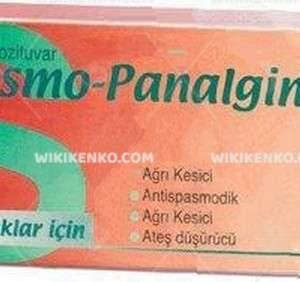Description
Decoding the Uses of Panalgine
A Multifaceted Approach to Pain Relief
Panalgine assumes the role of a versatile pain-relieving agent, catering to an array of discomforts. Its applications encompass:
- Toothache and Headache Relief: Panalgine proves its mettle in countering toothache and headaches, offering reprieve from distressing sensations.
- Menstrual Discomfort Mitigation: Women find solace in Panalgine during menstrual discomfort, as it gently alleviates the pain associated with this phase.
- Post-Operative and Rheumatic Comfort: Post-operative and rheumatic pain, known for their stubborn nature, meet their match in the form of Panalgine’s efficacious formula.
- Cold and Flu-Induced Pain and Fever Relief: It extends its relief to encompass the pains and fevers borne from colds and flu.
Unraveling the Mechanism
Central to Panalgine’s efficacy are paracetamol and propifenazone, two pivotal ingredients that double as pain relievers and fever reducers. The symphony of these components harmoniously orchestrates the relief sought by individuals grappling with various forms of discomfort. The presence of caffeine, a known enhancer of pain relief, further amplifies the medication’s efficacy.
Dosage Guidelines
The administration of Panalgine adheres to well-defined guidelines:
- Adult Dosage: Adults are advised to consume 1-2 tablets, strategically spaced for optimal relief.
- Adolescent Consumption: Adolescents aged 12-16 years find solace in a single tablet, carefully calibrated to their unique needs.
- Frequency Considerations: Up to three single doses can be consumed within 24 hours, serving as a roadmap for responsible consumption.
Limitations and Precautions
While Panalgine stands as a versatile remedy, it’s important to acknowledge its limitations. The medication should be avoided by individuals with:
- Allergies: Those allergic to pyrazolones or related compounds, phenylbutazone-containing products, paracetamol, acetylsalicylic acid, or caffeine are advised against Panalgine usage.
- G6PD Deficiency and More: Inherited G6PD deficiency, acute hepatic porphyria, or severe liver/kidney failure mark contraindications.
- Age Consideration: Children below 12 years of age or infants are advised against intake.
Cautious Consumption for Specific Groups
Panalgine usage merits caution for individuals with:
- Anemia and Organ Afflictions: Those with anemia, lung, liver, or kidney disease are advised to exercise caution during consumption.
- Gilbert’s Syndrome: Individuals with Gilbert’s syndrome, blood cell disorders, or a history of alcoholism should approach Panalgine with vigilance.
- Skin Reactions and Persistence: In the event of skin rash, itching, or other reactions, discontinuing the medication and seeking medical advice is crucial. Additionally, if pain and fever persist beyond a week, consulting a medical professional is advised.
Side Effects
Panalgine’s potency may come with potential side effects, including hypersensitivity reactions and nephrotoxicity. Higher doses could trigger discomforts such as nausea, drowsiness, coma, and convulsions.
Pregnancy and Breastfeeding
Consultation with a healthcare professional is imperative for pregnant and breastfeeding individuals. It’s essential to adhere to caffeine intake limits during pregnancy. With Panalgine containing 30 mg of caffeine per tablet, mindful choices are vital. Breastfeeding individuals should consider the possibility of drug transfer to infants via breast milk, emphasizing the importance of medical consultation.
Maximum Daily Dose
For adults, the maximum daily dose of Panalgine entails three single doses of 1-2 tablets within a 24-hour timeframe. Straying beyond these boundaries is cautioned against. Persistent pain and fever exceeding a week should prompt a consultation with a healthcare provider.
Alcohol Consumption
While specific interactions between Panalgine and alcohol remain elusive, it’s generally advisable to avoid alcohol consumption during medication. Alcohol’s potential to amplify side effects and diminish medication efficacy serves as a precautionary beacon. Always err on the side of caution by consulting a healthcare professional before combining alcohol with any medication.
Conclusion
Panalgine stands as a steadfast ally in the pursuit of pain alleviation. With its trio of paracetamol, propifenazone, and caffeine, it ushers in relief for a spectrum of discomforts. Adherence to dosage guidelines, understanding contraindications, and embracing precautions ensures its optimal utilization. As a beacon of solace, its potency comes hand in hand with a need for responsible consumption.











Reviews
There are no reviews yet.